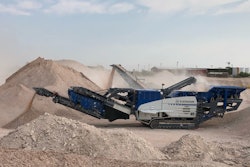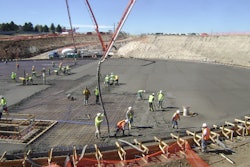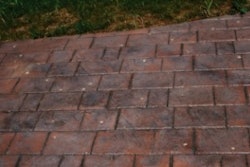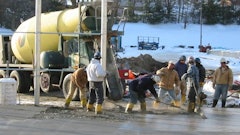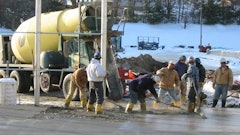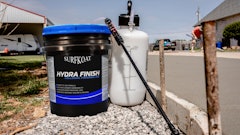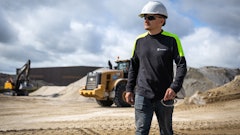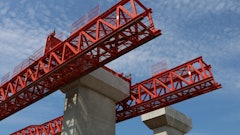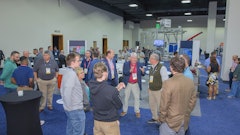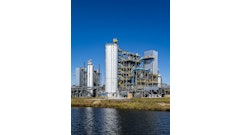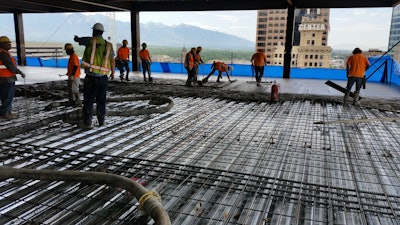
Sustainable construction practices have and will continue to drive design and specifications throughout the building industry. Because concrete remains one of the most used building materials in the world, it is important for concrete producers as well as engineers and contractors to understand the ways this material can be made and used more sustainably.
Key to addressing the environmental impact of construction is understanding production, use and how a material interfaces with adjacent systems. Because these points of data represent environmental impact before, during and after construction, they can be extremely valuable in developing a more comprehensive view of sustainability.
This is especially true when a material may have a higher environmental impact during production but contributes substantial benefits during and after construction. As an example, expanded shale, clay and slate (ESCS) lightweight aggregates are fired in rotary kilns and so represent a significant amount of embodied energy and greenhouse gas emissions. However, when used within structural lightweight concrete mixes or to facilitate internal curing, this material can offset its production footprint and contribute to more ecologically conscious construction and operation of a structure. Often these benefits become apparent when project teams look at a structure comprehensively, rather than at its individual components, and evaluate the structure from cradle to grave as opposed to cradle to gate.
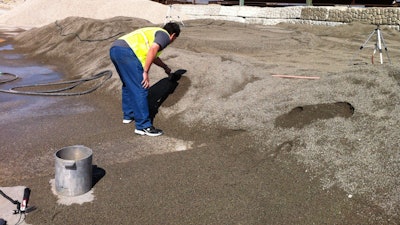 By replacing a percentage of normal weight aggregates with lightweight ones, producers can improve the resilience of their concrete.Courtesy of the Expanded Shale, Clay and Slate Institute
By replacing a percentage of normal weight aggregates with lightweight ones, producers can improve the resilience of their concrete.Courtesy of the Expanded Shale, Clay and Slate Institute
Longer Lasting Concrete Structures
In addition to showing the potential to reduce clinker content by supporting the reaction needs of SCMs, internal curing can also improve the resilience of concrete to chloride attack and water penetration. These improvements help concrete withstand the elements for a longer time, reducing the need to repair, replace or rebuild structures. Improved resiliency mitigates environmental impact by minimizing the material and energy needed to maintain a structure.
After the concrete has set, the water within prewetted ESCS lightweight aggregates slowly releases to cure the concrete from the inside out. This reduces chemical shrinkage until the concrete gains enough strength to minimize cracking, a common cause for chloride penetration. Additionally, it minimizes the number and size of cracks when compared to conventionally cured concrete, resulting in a less permeable material. Without cracking and microcracking, concrete is more resistant to corrosion due to chloride attack, which can prolong the lifespan and durability of the structure. 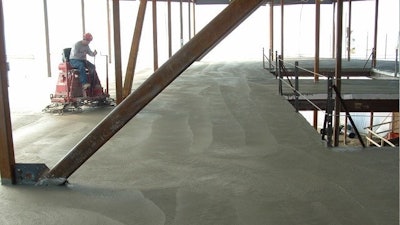 Structural lightweight concrete with lightweight aggregates allows for thinner floor slabs and a reduction in structural materials.Courtesy of the Expanded Shale, Clay and Slate Institute
Structural lightweight concrete with lightweight aggregates allows for thinner floor slabs and a reduction in structural materials.Courtesy of the Expanded Shale, Clay and Slate Institute
Reducing Other Structural Material Needs
Lightweight aggregates can also be used to facilitate lighter concrete mixtures. By replacing a portion of normal weight aggregates with lightweight aggregates, concrete producers can reduce the total weight of a concrete mix from 145 pounds per cubic foot (pcf) to weights between 90 and 135 pcf, . Structural lightweight concrete, like normal weight concrete that uses internal curing, may represent a greater environmental impact from cradle to gate due to the embodied energy of its production, but its contributions to the sustainability of the built environment more than offset this.
Structural lightweight concrete can be specified in thinner slabs while still meeting fire rating requirements. This decreased cross-section reduces the quantity of concrete needed to construct the same area of floor slab. These qualities, in combination with the material’s lighter weight, reduces structural and dead loads by up to 38 percent. This translates to reductions in forming, footings and other foundation materials. Energy intensive steel columns, beams and floor decking sizing can be reduced because of the reduction in weight. While this can support more cost-effective designs, it can also lower the environmental impact of construction since buildings can be made more structurally efficient and embody less carbon due to reductions in shipping requirements and in the quantities of other materials.
Structural lightweight concrete has also been shown to have lower thermal conductivity than normal weight concrete. It can be thought of as a structural insulation. This may lead to buildings that have more efficient operations—further contributing to more sustainable building practices after construction. 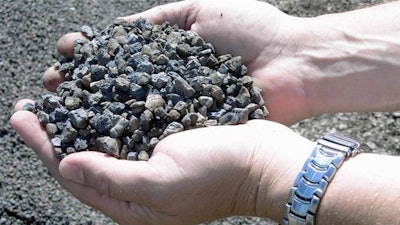 By replacing a percentage of normal weight aggregates with lightweight ones, producers can improve the resilience of their concrete.Courtesy of the Expanded Shale, Clay and Slate Institute
By replacing a percentage of normal weight aggregates with lightweight ones, producers can improve the resilience of their concrete.Courtesy of the Expanded Shale, Clay and Slate Institute
A More Environmentally Friendly Construction
The discussion of sustainable building practices and lowering embodied carbon often focuses on the cradle-to-gate impact of building materials. While this provides some useful data, it does not encompass the full scope of a project. For example, from a cradle-to-gate perspective, ESCS lightweight aggregates would not be an ecologically conscious material. However, this material can offset the environmental impact of its production by contributing other benefits to the design, construction and operation of a structure.
For this reason, engineers and specifiers are encouraged to take a cradle-to-grave perspective when evaluating the environmental impact of the materials used in construction. Doing so will not only provide a more comprehensive understanding of how material choice can support sustainable practices but also how these choices can help lead the building industry to achieving reduced emission goals.





